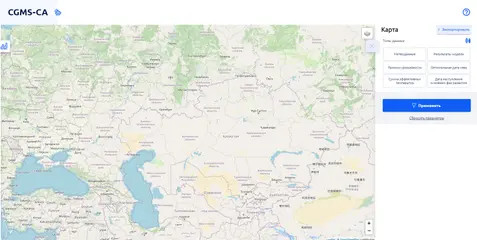The Crop Growth Monitoring System for Central Asia (CGMS-CA) allows monitoring the conditions for the growth and development of crops and forecasting their yields for the countries of the Central Asian region, including Kazakhstan, Uzbekistan and Turkmenistan. CGMS-CA allows to assess the conditions of growth, development and accumulation of productive biomass in a significant list of agricultural crops in the region – winter wheat, spring wheat, cotton, spring rapeseed, lentils and rice. For each country of the region, the system has been adapted, considering some specifics of each one in terms of information, methodology and technology. The main steps of technological adaptation of the CGMS-CA system includes: development of a meteorological database for the certain period (not less than 10 years) using standard meteorological observations of the Hydrometeorological network and free available NASA Power data (https://power.larc.nasa.gov/); development of a soil characteristics database, by finding a correspondence between the taxonomy of the digital soil map and the classification of soils WRB; development of a phenological characteristics database such as sown dates, dates of emergence, anthesis and maturity obtained from agrometeorological stations network of the National Hydrometeorological services of the region; development of a statistical crop yields database at the regional and district levels of each country of the region. One of the main specifics of the CGMS-CA are estimation of biophysical parameters of crop development based of simulations of WOFOST (WOrld FOod Studies) model and possibility to display the results of the simulations at the different administrative levels based on a spatial schematization and aggregation. The prediction of crop yields in the context of administrative units is based on statistical methods (pair and multiple regression). CGMS-CA has been developed by specialists of the Ukrainian Hydrometeorological Institute (https://uhmi.org.ua/) as part of a joint project with the Regional Environmental Center of Central Asia (https://carececo.org/main/)

